by leo.baquiran@yahoo.com | Jul 1, 2025 | Computer
Hey guys here’s a robust review of the ASUS TUF Gaming F16 (FX607)—covering its standout strengths, capabilities, and how it stacks up against the competition.
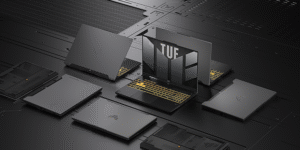
Image source: asus.com/sg/
Overview
The ASUS TUF Gaming F16 FX607 is a mid‑range gaming laptop built to deliver strong performance and reliability. Configured with up to:
- Intel Core i7‑13650HX (6 P‑cores + 8 E‑cores, 55 W base TDP)
- NVIDIA GeForce RTX 4060 (130 W TGP) or optional RTX 4050
- High‑refresh 16″ IPS display (165 Hz FHD+ / 16 × 10)
- Dual-channel DDR5 RAM and PCIe 4.0 SSDs
- A large battery with USB‑C charging support
This blend targets gamers who need solid FPS, color-accurate screens for content creation, and a tough build—without breaking the bank.
Performance: Desktop-Class Power
CPU & GPU
- The i7‑13650HX provides desktop-level multitasking with high single-thread and multi-core speeds.
- RTX 4060 under a 130 W TGP handles modern AAA games smoothly at 1080p with high settings.
- A MUX switch & NVIDIA Advanced Optimus allows direct dGPU output, reducing latency by up to ~8–10% FPS loss during gameplay
Cooling
- Dual 84‑blade Arc Flow fans, 4 exhaust vents, and up to 5 copper heatpipes ensure sustained boost clocks with thermal headroom
- In “Turbo” mode, performance peaks—but fan noise increases; “Performance” mode offers a quieter balance
Verdict: Excellent real-world gaming performance, rivaling pricier systems without throttling.
Display & Visuals
- A 16″ IPS panel with 165 Hz refresh, fast response, and over 95% sRGB coverage—floor for both immersive gaming and accurate photo/video work
- The 16:10 aspect ratio provides more vertical real estate—great for productivity and immersion.
- G-Sync support adds smoother visuals during gameplay
Edge: Almost desktop-class panel quality at a mid-tier price, excellent for dual gamers/creators.
Build Quality & Durability
- MIL‑STD‑810H certified: withstands vibration, shock, altitude, and extreme temperature—built for rugged use.
- Solid chassis design featuring plastic reinforced with metal and unyielding hinges.
Edge: More durable than other budget gaming laptops that often cut corners on chassis quality.
Upgradability & I/O
- Two SODIMM slots + two PCIe 4.0 M.2 slots for easy RAM and SSD upgrades.
- Versatile ports including HDMI 2.1, Thunderbolt 4/USB‑C (DP 1.4 + 100 W PD), multiple USB‑A ports, RJ‑45 LAN, Kensington lock, and audio combo jack.
Edge: A rare combination of strong upgradability and port variety in this segment.
Battery Life & Mobility
- ASUS claims an impressive 90 Wh battery (though some markets may have 56 Wh), delivering ~20 hours of web browsing in iGPU mode with panel power-saving features enabled.
- Works with lightweight USB-C charging, enabling mobile productivity if you forget the bulky 240 Watts brick.
Edge: Exceptional endurance for a gaming laptop, unmatched by most rivals.
User Experience: Keyboard, Audio, Software
- Comfortable, 7 mm travel backlit keyboard (with dedicated media keys) and spacious 128 × 76 mm touchpad.
- Dolby Atmos + AI noise cancellation speakers/mic, ideal for gaming and content creation.
- Armoury Crate centralizes performance/power profiles, lighting, fan control, with a “Panel Power Saver” toggle for battery mode.
Edge: Polished input experience with thoughtful software offering system-level control.
Where It Falls Short
- Under full load, fans in “Turbo” mode can get loud & chassis warm.
- Heavier and thicker than ultraportable gaming machines—though remains acceptable for desk‑based use.
- Some misconfigurations ship with lower-tier CPUs (like Core i5‑12450H) and RTX 3050, but the i7 + RTX 4060 SKU is the sweet spot.
Competitive Comparison
How does the FX607 stack up against competitors?
|
Competitor
|
Strengths
|
FX607 Advantages
|
Lenovo Legion 5
|
Sleek premium build, RTX 4070 variant |
Better upgradability, MIL‑STD durability, USB‑C PD, louder but more rugged |
HP Victus 16
|
Lower cost entry‑level, similar display |
Superior build quality, stronger CPU, better cooling, upgradability |
Acer / Dell mid‑range
|
Often better screens or aesthetics |
MUX switch, dual SSD+RAM slots, durability, battery life |
ROG Strix / Omen
|
High-end models with RTX 4070–4080 series |
More affordable, quieter design, upgrades remain easy |
The TUF is worth the difference… Better build and display quality… larger capacity battery + stronger CPU.” reddit.com
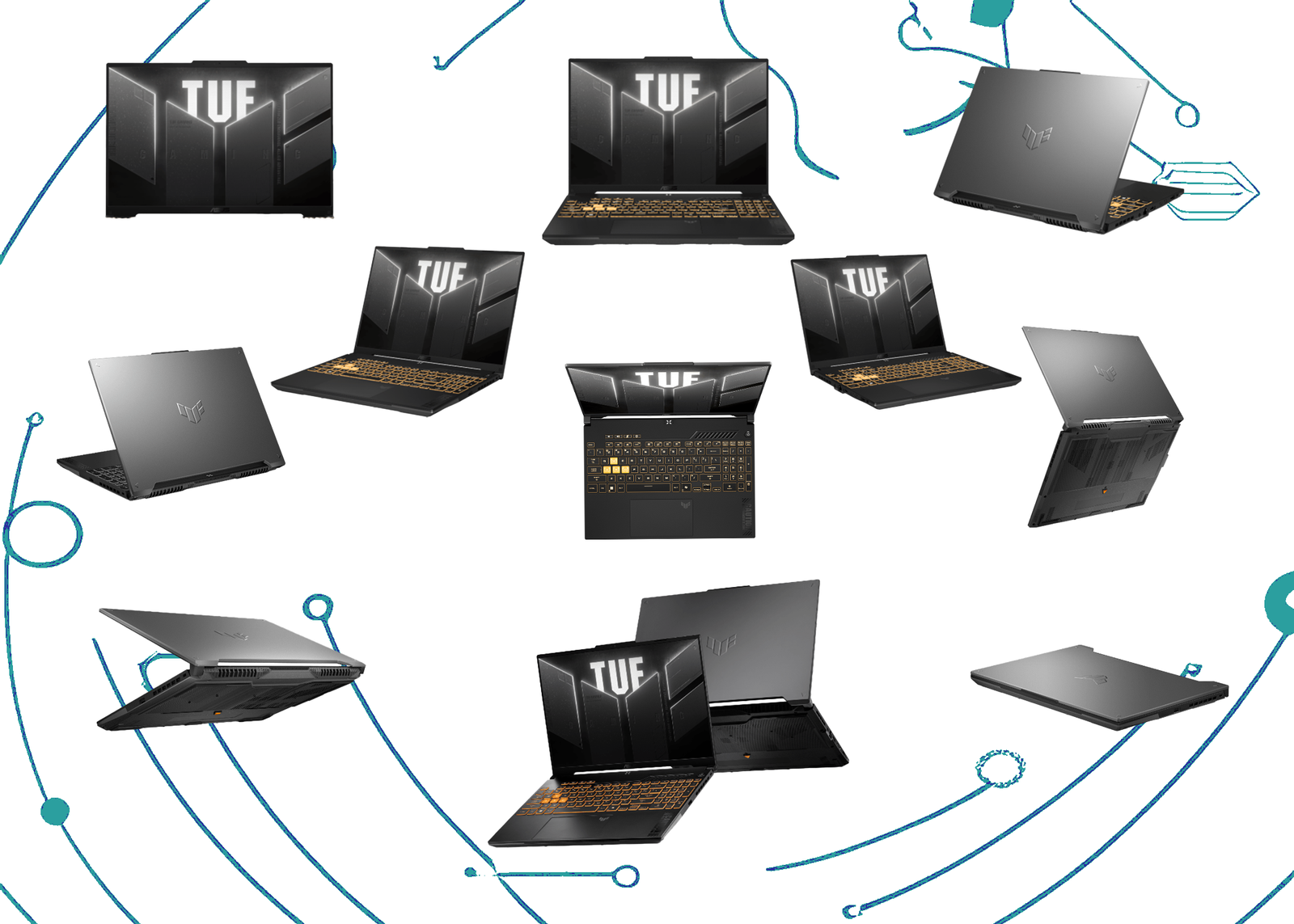
Value & Pricing
- Current deals show FX607 with i7‑13650HX + RTX 4060 + 16 GB DDR5 + 512 GB SSD under SGD 1,400–1,600 .
- Configurations with RTX 4050 offer further savings (~$1,000), though performance scales accordingly.
Edge: Best-in-class spec-to-price ratio—especially in RTX 4060 tier.
Product Highlight
The ASUS TUF Gaming F16 FX607 is a well-balanced gaming powerhouse, featuring an Intel Core i7-13650HX processor, RTX 4060 GPU, and a 16″ FHD+ 165Hz display. Priced at approximately SG$1,777.00 and available from the ASUS Store SG, it delivers strong performance across the board. With a solid 4.7★ rating, this model stands out for its rugged build quality, excellent screen, MUX switch, reliable battery life, and effective thermal management—making it a great choice for gamers who demand both power and durability.
Final Verdict
The ASUS TUF Gaming F16 FX607 is a standout gaming laptop that punches well above its price.
Pros:
- Near desktop gaming performance with RTX 4060 + i7‑13650HX
- High-refresh, color‑accurate 16:10 panel
- Rugged MIL‑STD build & excellent cooling
- Dual‑slot RAM/SSD for future-proofing
- Robust battery life with USB‑C charging
Cons:
- Noisy peak fans under heavy load
- Slightly bulky/unwieldy for travel
- Entry configs can underdeliver—opt for i7 + RTX 4060
Compared to rivals, the FX607 wins on reliability, performance, and features, offering a more compelling package—especially for gamers who also need creator tools or want longevity.
Recommendations
- For gamers who also content-create: This is one of the top choices in the sub-SGD 1,900 bracket.
- For portability-prioritized users: Consider thinner RTX laptops (e.g., Zephyrus G14) but understand you’ll sacrifice thermal headroom & repairability.
- Looking for a future-proof rig: The FX607’s upgradable platform ensures a multi-year lifespan, even when gaming budgets tighten.
by leo.baquiran@yahoo.com | Jun 23, 2025 | Computer
Here is the Framework Laptop—highlighting its best features, specifications, pricing—with a summary and verdict at the end.

Framework Laptop image used with attribution to Framework
Introduction: The Modular Revolution
The Framework Laptop stands apart in today’s laptop market by embracing modularity, repairability, and sustainability. Born from the right-to-repair movement, Framework’s mission is clear: empower users with full control over their devices. Whether it’s upgrading a component, replacing damaged parts, or customizing ports—you can easily DIY it yourself.
Best Features
Modular & Repairable Design
Every major component—mainboard, RAM, storage, keyboard, trackpad, battery, ports, and even the screen—is user-replaceable. Framework publishes guides and sells individual parts, upholding its open-source ethos pcworld.com+9frame.work+9reddit.com+9theverge.com+2en.wikipedia.org+2theverge.com+2.
Customizable Expansion Cards –
Rather than fixed ports, Framework includes configurable expansion-card slots. You choose what ports you need—USB-C (with Thunderbolt/USB4), USB-A, HDMI, DisplayPort, microSD, Ethernet, headphone jack—swapping them as desired.
DIY Edition – Choose a barebones chassis at a reduced price and install components yourself. Ideal for tinkerers or budget-conscious users looking to upgrade later frame.work+15frame.work+15reddit.com+15.
Future-Proof Upgrades – Need a more powerful CPU or upgraded GPU? Framework’s swappable mainboards make it possible—across generations, even cross-CPU-line (e.g., Intel to AMD) community.frame.work+13en.wikipedia.org+13theverge.com+13.
Sustainability Commitment – Framework’s ecosystem extends beyond hardware—it includes firmware openness (coreboot/UEFI) and community development. The company actively refurbishes and sells “factory seconds” to reduce waste .
Models & Specifications
Framework Laptop 13 (2025)
- CPU: Up to AMD Ryzen AI 9 HX 370 (12-core AI-centric)
- Memory: Up to 96 GB DDR5‑5600
- Display: 13.5″, 2880×1920, 120Hz matte panel
- Graphics: Integrated RDNA3 or discrete GPU via Expansion Bay
- Ports: 4 user-swappable expansion slots + combo audio jack
- Connectivity: Wi‑Fi 7, Bluetooth 5.4
- Webcam: 1080p with privacy LED and hardware kill-switch
- Battery: 61 Wh
- Weight: ~1.36 kg (3 lb) laptopmag.com+10pcworld.com+10fr.wikipedia.org+10en.wikipedia.org
Framework Laptop 12
Framework Laptop 16
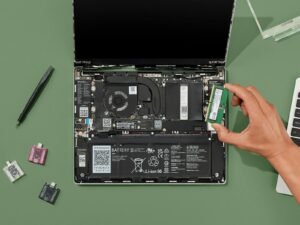

Framework Laptop image used with attribution to Framework
Performance Overview
Framework Laptop 13
With Ryzen AI 5/7/9 CPUs, this model delivers competitive performance in productivity and light creative workloads. The discrete GPU bay adds flexibility for heavier tasks wired.com+3theverge.com+3pcworld.com+3.
Reviewers noted strong multi-core performance but modest single-core results. Battery life ranged from 7.5 to 11 hours, lagging behind MacBook Air, but still adequate wired.com.
Framework Laptop 12
Optimized for light use—web, documents, education. Convertible functionality and screen repairability are its core strengths wired.com+4theverge.com+4wired.com+4.
Framework Laptop 16
Powered by Ryzen 7040HS, it offers desktop-like performance with great efficiency and integrated graphics. Modular GPU support further enhances its capabilities frame.work.

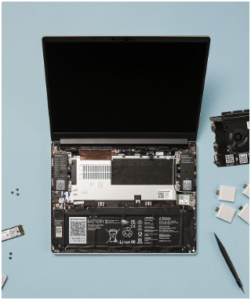

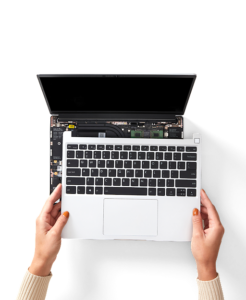
Framework Laptop image used with attribution to Framework
Pricing
Framework’s transparent pricing model offers configurations at two levels:
Framework Laptop 13
Models:
Framework Laptop 12
- Starts at US $799 for assembled units
- DIY Edition: From US $549 frame.work
Framework Laptop 16
Pricing aligns with premium Ryzen HS performance and modular GPU support—expect US $1,200+ depending on specs .
Pros & Cons
✅ Pros
- Truly modular and repairable—parts available and upgradeable
- Customizable port layout to suit your use
- DIY edition reduces entry cost and appeals to tinkerers
- Swappable mainboards enable CPU upgrades across generations
- Strong sustainability message, refurbishing, and open firmware
⚠️ Cons
- Premium pricing compared with sealed competitors
- Older peripherals (webcam, keyboard) can feel dated
- Battery life trails behind leading ultrabooks
- Performance modest in entry CPU options (e.g., i3, Ryzen 7040U)
Summary
The Framework Laptop is a bold step forward for user empowerment in computing. It bucks the sealed, disposable model by offering full component access, part-level support, and upgrade paths spanning beyond typical warranty periods. The expansion card architecture lets you truly personalize your machine.
Whether it’s the ultraportable Laptop 12, the balanced Laptop 13, or the powerful Laptop 16, Framework nails the ethos of sustainability and flexibility—though often at a cost premium and with some older hardware quirks.
Verdict: Should You Buy It?
Yes, if you:
- Value repairability and component-level upgrades
- Want a laptop that can evolve (CPU, RAM, ports, storage)
- Care about sustainability and reducing e-waste
- Enjoy customizing hardware and DIY builds
Maybe consider alternatives if you:
- Prioritize top-tier performance per dollar (e.g., MacBook Air, XPS 13)
- Need long battery life or premium media features
- Prefer a truly sealed, maintenance-free notebook
Final Recommendation
For tech enthusiasts, longevity-focused professionals, and those tired of throwaway electronics, the Framework Laptop is a groundbreaking choice. It’s not for everyone—its strength lies in modularity rather than maximum specs. If your top goals are flame graphics benchmarks or all-day battery life, other laptops may serve you better. But if you want a tool that lasts, you can fix, and you can future-proof—Framework stands almost alone.
🧾 TL;DR:
- What it is: Fully modular, repairable, customizable laptop (12″, 13″, 16″ sizes)
- Price: DIY from $549–899; prebuilt from $799–1,829
- Specs: Up to Ryzen AI 9 HX 370 (12-core), 96 GB RAM, 120Hz QHD+ display, swappable GPU
- Best for: Tech-savvy users, DIYers, sustainability advocates
- Not ideal for: Those needing max perf, long battery life, or sealed convenience
Check this out for the comparison to other laptops in your budget, or help configuring a Framework build?
Here’s a detailed comparison between the Framework Laptop and its competitors from Lenovo and Asus, focusing on similar premium thin-and-light or modular models. This helps determine which one is the best fit based on upgradeability, performance, value, and purpose.
Comparison Table
| Feature |
Framework Laptop 13 |
Lenovo ThinkPad X1 Carbon Gen 12 |
Asus ZenBook 14 OLED (UX3405) |
| CPU |
Up to AMD Ryzen AI 9 HX 370 or Intel Core Ultra 7 |
Intel Core Ultra 7 155H |
Intel Core Ultra 7 155H |
| RAM |
Up to 96 GB (upgradeable SO-DIMM) |
Up to 64 GB (soldered) |
32 GB LPDDR5X (soldered) |
| Storage |
M.2 NVMe SSD (user upgradeable) |
M.2 NVMe SSD (upgradeable) |
M.2 NVMe SSD (upgradeable) |
| Display |
13.5″, 2880×1920, 120Hz |
14″, 2.8K OLED or WUXGA LCD |
14″, 2.8K OLED, 120Hz |
| GPU |
Integrated RDNA3 or optional eGPU module |
Integrated only (Intel Arc) |
Integrated only (Intel Arc) |
| Ports |
4 swappable expansion cards |
2× Thunderbolt 4, USB-A, HDMI |
2× Thunderbolt 4, USB-A, HDMI |
| Battery |
61 Wh |
57–65 Wh |
75 Wh |
| Weight |
~1.36 kg |
~1.09 kg |
~1.20 kg |
| Repairability |
Excellent (fully modular) |
Moderate (some parts replaceable) |
Limited (non-modular) |
| Price (USD) |
$899–$1,829 |
$1,600–$2,200 |
$1,300–$1,700 |
Breakdown
🔧 Upgradeability & Repairability
- Framework Laptop dominates here. Everything from the mainboard to ports and even the screen is user-replaceable or upgradeable.
- ThinkPad X1 Carbon allows SSD replacement, but RAM is soldered. Battery, keyboard, and screen replacements are possible but harder.
- ZenBook 14 OLED has soldered RAM, sealed chassis, and limited serviceability.
Winner: 🥇 Framework Laptop
Performance
All three offer Intel Core Ultra CPUs (or AMD Ryzen AI in Framework). Performance is comparable in productivity tasks.
However:
- Framework offers up to 96 GB RAM and optional GPU expansion (on the 16″ model), making it better for devs, creators, or engineers.
- Lenovo and Asus use faster LPDDR5X RAM (though not upgradable), better for quick access but less flexible.
Winner: Tie — depends on your use case.
For raw flexibility and RAM ceiling: Framework.
For speed out-of-box: Asus/Lenovo.
Display Quality
- ZenBook 14 OLED and ThinkPad X1 Carbon OLED variant both have stunning 2.8K OLED panels with deep blacks and vibrant colors.
- Framework has a high-res 3:2 matte display (2880×1920) at 120 Hz—great for productivity, less eye-catching than OLED.
Winner: 🥇 Asus ZenBook 14 OLED (for media)
Framework wins for aspect ratio and matte workspace if you’re not after OLED glamor.
Battery Life
- ZenBook 14 OLED typically lasts 12–13 hours (larger battery, efficient screen).
- ThinkPad X1 Carbon also achieves 10–12 hours depending on config.
- Framework Laptop gets 7.5–9 hours in mixed use, which is decent but not best-in-class.
Winner: 🥇 Asus ZenBook
Build & Design
- ThinkPad X1 Carbon is incredibly thin and light, built with carbon fiber—legendary durability and portability.
- ZenBook feels premium with its metal unibody and sleek design.
- Framework is solid but slightly heavier due to modularity. Slightly chunkier chassis.
Winner: 🥇 ThinkPad X1 Carbon (for business)
ZenBook also strong contender for elegance.
Value for Money
- Framework Laptop DIY Edition starts at $899—you add your own RAM and storage.
- ZenBook offers a complete premium package for ~$1,300.
- ThinkPad X1 Carbon tends to be most expensive, but with great support and enterprise features.
Winner: Depends on needs
Want flexibility & future-proofing: Framework
All-in-one premium feel: ZenBook
Conclusion: Which One Should You Buy?
| Use Case |
Best Choice |
| Modular, upgradeable, future-proof laptop |
Framework Laptop |
| Lightweight business ultrabook with enterprise features |
ThinkPad X1 Carbon |
| Media consumption, lightweight premium design |
Asus ZenBook 14 OLED |
🟢 Final Thoughts
The Framework Laptop isn’t for everyone—but for tech-savvy users, developers, and sustainability-minded buyers, it’s unmatched. It’s not just a laptop—it’s a long-term computing platform.
- Buy Framework if you want to own your laptop—tinker, upgrade, and repair on your terms.
- Choose ThinkPad if you want a rock-solid business laptop with excellent support.
- Pick ZenBook if you want a beautiful OLED screen in a slim, fast package with no intention of opening the chassis.
by leo.baquiran@yahoo.com | Jun 19, 2025 | Computer
Check this out. Here’s a comprehensive review of the Aftershock X‑16 PRO, covering its design, performance, display, thermals, battery life, keyboard, and overall value.
🖥️ Design & Build Quality
The X‑16 PRO features a premium all-aluminium chassis that feels robust—“built like a tank” according to one user—while maintaining an understated, minimalist look suited for both gaming and professional settings youtube.com+15reddit.com+15canbuyornot.com+15aftershockpc.com.au. Available in configurations up to Intel’s 24-core Core Ultra 9 275HX and NVIDIA’s RTX 5090, it delivers desktop-grade power in a notebook form aftershockpc.com.au+2aftershockpc.com.au+2reddit.com+2.
🌈 Display
A standout feature is its 16″ 2560×1600 Mini‑LED panel, offering up to 300 Hz refresh rate and peak brightness reaching 1,200 nits on higher-end variants aftershockpc.com.au+1tiktok.com+1. Reddit users rave about the display, calling it “gorgeous and super bright,” though noting minor limitations in local dimming performance reddit.com+1canbuyornot.com+1.
⚙️ Performance
The base configuration pairs the Core Ultra 9 275HX with the RTX 5070 Ti, scaling up to RTX 5090 on premium models. Users report strong thermals and stable performance:
The laptop supports optional closed‑loop water cooling (“glacier module”) for improved thermals, quieter operation, and potential clock boosts when docked aftershockpc.com.au.
🔋 Battery Life & Power
Equipped with a 99 Wh battery, the laptop delivers 3–4 hours of general use on battery with reduced brightness and GPU power reddit.com. While gaming or heavy workloads significantly reduce longevity, this runtime aligns with expectations for a high-performance gaming system.
🎧 Keyboard & Input
The full-size RGB membrane keyboard includes a numpad and features per-key RGB, anti-ghosting, and N‑Key rollover. Built for a responsive, quiet typing experience, it scores highly for both efficiency and comfort tiktok.com+8aftershockpc.com.au+8tiktok.com+8.
🎙️ Speakers
While adequate for everyday tasks and media consumption, the speakers are average—similar to most gaming laptops reddit.com.
🚨 BIOS & Undervolting
One limitation is limited BIOS support—users are unable to undervolt the CPU reddit.com+1aftershockpc.com.au+1. This may affect enthusiasts seeking deeper thermal and power optimization.
🧊 Thermals & Cooling
In Overboost mode, core temperatures hover in the high 80s to low 90s °C. The optional water-cooling module significantly improves cooling efficiency and fan noise—an attractive option for power users reddit.com.
🔄 Unique Features
- Mux switch support adds control over routing between GPU and integrated graphics .
- Thunderbolt 4 port connects directly to the dGPU for external display adapter use reddit.com.
- No G‑Sync support, but the high-refresh panel compensates reddit.com.
✅ Pros & Cons
| ✅ Pros |
⚠️ Cons |
| Sturdy and premium build |
Limited BIOS undervolt control |
| Exceptional Mini‑LED display |
Poor battery life under load |
| Desktop-class performance with RTX 50-series |
Local dimming could be better |
| Optional water cooling support |
Speakers are only average |
| Good keyboard (RGB, N-key) |
|
🏆 Verdict
The Aftershock X‑16 PRO is an elite gaming laptop for those desiring desktop-level performance in a portable package. Its stunning Mini‑LED display, premium build, and powerful RTX 50-series GPUs make it ideal for gamers, creators, and professionals. While limitations like BIOS undervolting and moderate battery life exist, the core strengths far outweigh the drawbacks—especially with optional water cooling and the presence of a Mux switch.
📦 Model Variants & Pricing
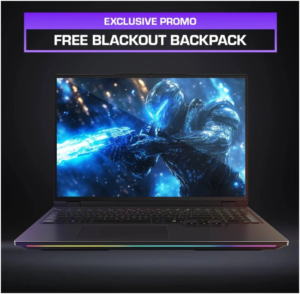
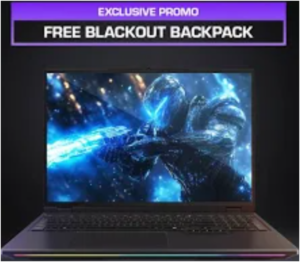
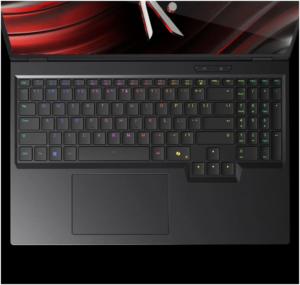
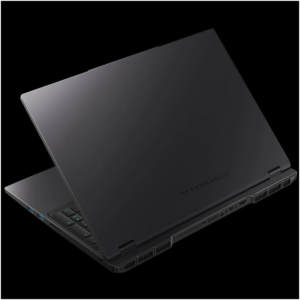
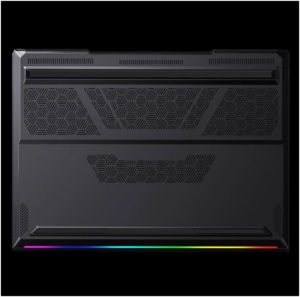
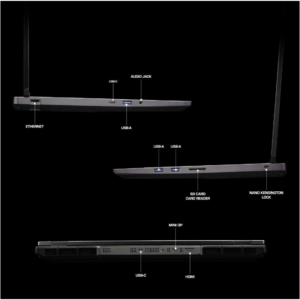
Here are the key configurations available:
Entry‑high performance – $3,050.00
Aftershock X‑16 PRO – Core U9 275HX + RTX 5070 Ti
Flagship desktop‑class power – $5,299.00
Aftershock X‑16 PRO – Core U9 275HX + RTX 5090
Ask about this
- Aftershock X‑16 PRO (RTX 5070 Ti) – Balanced performer with excellent display and build at ~S$4,000–4,500 in Singapore, offering solid thermals and near-peak capabilities.
- Aftershock X‑16 PRO (RTX 5090) – Ultimate flagship model targeting users wanting the best mobile graphics available today.
📣 Reddit Feedback
“The mini‑LED display is gorgeous and super bright…” viascreens.com+7reddit.com+7aftershockpc.com.au+7
“Built like a tank, with aluminium everywhere.” reddit.com
🔧 Should You Buy It?
Get the X‑16 PRO if you:
- Prioritize top-tier gaming/creator performance.
- Want a high‑end Mini‑LED display with 300 Hz refresh.
- Appreciate a solid, stealthy metal build and premium keyboard.
- Might use or want optional water cooling for better thermals and noise control.
Consider other models if you:
- Require long battery life for on-the-go work.
- Are an enthusiast who values deep undervolting control (limited BIOS).
- Want lighter portability—this weighs around 2.8 kg (~6.2 lbs).
Final Score
- Build & Design: 9.5/10
- Display: 9.7/10
- Performance: 9.6/10
- Thermals/Noise: 8.5/10 (better with water module)
- Battery Life: 7.0/10
- Keyboard & Input: 9.0/10
- Speakers: 7.5/10
by leo.baquiran@yahoo.com | Jun 12, 2025 | Computer
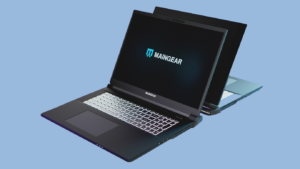
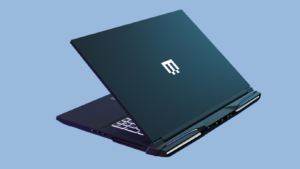
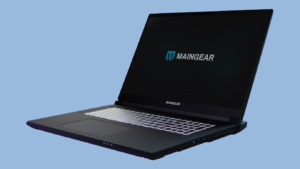
Maingear Ultima 18: Desktop-Class Power in a Backpack
When Maingear launched the Ultima 18 on June 11, 2025, it wasn’t just unveiling another gaming laptop—it was redefining the category. Built in collaboration with Clevo, this 18‑inch beast aims to deliver desktop-level performance—without compromising portability. As Maingear CEO Wallace Santos says, it’s “a no‑compromise desktop‑class gaming rig that fits in a backpack” en.wikipedia.org+14forbes.com+14laptopmag.com+14tomsguide.com+3notebookcheck.net+3venturebeat.com+3.
The Heart of the Beast: CPU & GPU
Intel Core Ultra 9 275HX
At the core of the Ultima 18 is Intel’s brand-new Core Ultra 9 275HX processor. With 24 cores and a turbo boost up to 5.4 GHz, this “Arrow Lake” CPU is nearly as fast as the slightly higher-clocked 285HX variant released earlier this year forbes.com+8pcworld.com+8notebookcheck.net+8. The multi-core performance makes it equally capable for intense gaming, multitasking, content creation, and even AI workloads.
NVIDIA GeForce RTX 5090 / RTX 5080
pa plenty of desktop-level graphics. Users can choose between the RTX 5080 or the flagship RTX 5090 Laptop GPU—each equipped with up to 24 GB of GDDR7 VRAM and a 175 W TGP—to dominate AAA titles and creative workflows tech.yahoo.com+12maingear.com+12venturebeat.com+12. It’s a GPU lineup typically reserved for top-tier desktops, now mobile.
Memory & Storage: No Compromises
Perhaps the most impressive specs come in RAM and storage:
- Up to 192 GB DDR5 memory across four SO-DIMM slots (dual‑channel), with 48 GB modules—ideal for extreme multitasking or large-scale creative projects notebookcheck.net.
- Four M.2 NVMe SSD slots, including one PCIe Gen5x4 and three Gen4x4 bays, supporting up to 32 TB total storage—speed and expandability at its best pcworld.com+6maingear.com+6notebookcheck.net+6.
Even base models pack 32 GB RAM and 2 TB SSDs, with “Boost” options doubling both venturebeat.com+2maingear.com+2notebookcheck.net+2.
Visuals That Slay
At 18 inches with a 16:10 aspect ratio, the display delivers:
- Resolution: 3840 × 2400 (4K)
- Refresh rate: 200 Hz G‑SYNC
- Color gamut: 100 % DCI‑P3
- Response time: < 7 ms
This is one of the few 4K 200 Hz gaming panels around, giving you smooth 4K visuals at desktop-level fidelity laptopmag.com+12maingear.com+12notebookcheck.net+12tweaktown.com+2laptopmag.com+2tomshardware.com+2.
Performance Modes & Cooling
Inside is an advanced cooling system with adjustable fan profiles controlled via Maingear’s Control Center. Choose Performance mode for full power or Entertainment mode for quiet gaming tech.yahoo.com+8maingear.com+8maingear.com+8. Plus, NVIDIA Advanced Optimus intelligently switches between integrated and discrete graphics to extend battery life when unplugged laptopmag.com+9forbes.com+9venturebeat.com+9.
Battery & Mobility
Despite its power, the Ultima 18 packs a hefty 98 Wh battery and ships with a 330 W power brick designed to fit in a backpack. It also supports USB‑C charging, letting you top up on the go prnewswire.com+12forbes.com+12venturebeat.com+12. Though weighing around 8.8 lb (3.99 kg), Maingear has succeeded in keeping it travel-friendly compared to many desktop replacements forbes.com+8laptopmag.com+8notebookcheck.net+8.
Connectivity & I/O
Leveling up beyond typical laptops, the Ultima 18 offers:
This lineup ensures compatibility with multi-monitor setups, fast networking, and even future AR/VR accessories.
Build Quality, Design & Features
Housed in a metal chassis with reinforced lid and palm rest, the Ultima 18 exudes durability tomshardware.com+3notebookcheck.net+3venturebeat.com+3. Additional premium touches include:
Pricing & Support
The Ultima 18 starts at $3,599 for the base RTX 5080 and rises to $4,299 for the RTX 5090 GPU istartvalley.org+13maingear.com+13pcworld.com+13. Custom configurations let buyers max out RAM and SSD slots. Importantly, every unit comes with lifetime support from Maingear’s New Jersey team maingear.com+9laptopmag.com+9notebookcheck.net+9.
What Makes the Ultima 18 Stand Out?
- Desktop-level performance with cutting-edge CPU and GPU options.
- Huge memory and storage ceiling — up to 192 GB RAM and 32 TB SSD.
- Spectacular 4K 200 Hz panel—rare in mobile machines.
- Comprehensive connectivity including Thunderbolt 5 and dual LAN.
- Support and build quality consistent with Maingear’s boutique reputation.
While heavy, expensive, and not meant for casual travel, the Ultima 18 appeals to users seeking desktop power in a backpack—ideal for pro gamers, streamers, content creators, and anyone needing future-proofed horsepower.
Verdict
The Maingear Ultima 18 is a niche product—but within that niche, it’s unmatched. It combines desktop-like performance, a stunning display, flexible upgradability, and premium design all in one machine. It’s not for everyone—its weight and price reflect that—but for those who demand maximum power on the go, it’s a serious contender.
- Pros:
- Desktop-grade CPU & GPU
- Massive RAM & storage limits
- Beautiful 4K, 200 Hz display
- Rich connectivity
- Exceptional support
- Cons:
– Heavy (8.8 lb)
– Limited battery life under load
– Premium price
Final Thoughts
If you refuse to compromise on power, speed, or upgradeability, Maingear’s Ultima 18 deserves serious consideration. With its high-end specs, future-facing features, and Maingear’s signature support, it redefines what a gaming laptop can be: a portable desktop powerhouse.
Let me know if you’d like benchmarks, comparisons with rivals like the Razer Blade 18 or MSI Titan 18, or deeper insights into performance in specific games or workloads!
by leo.baquiran@yahoo.com | Mar 13, 2025 | Computer, Technology
Introduction
The Lenovo Legion 7i (16”, Gen 9) is the latest iteration of Lenovo’s high-performance gaming laptop series, designed for hardcore gamers and content creators. Packed with Intel’s latest processors, NVIDIA’s powerful graphics, a stunning 16-inch display, and advanced cooling technology, the Legion 7i Gen 9 pushes the boundaries of gaming laptops.
This article explores the key features, specifications, performance benchmarks, and why the Legion 7i Gen 9 stands out in the gaming laptop market.
Design & Build: A Sleek Yet Powerful Machine
The Legion 7i (16”, Gen 9) maintains Lenovo’s signature Legion aesthetic—premium build quality with an aluminum chassis, sleek edges, and a RGB-lit Legion logo on the lid. The storm grey color gives it a refined, professional look that fits both gaming and professional environments.
Key Design Features:
- Thin bezels around the 16-inch QHD+ (2560×1600) display
- Per-key RGB lighting on the keyboard for customization
- Large touchpad and a full-sized keyboard with deep key travel
- Multiple connectivity ports, including USB-C, Thunderbolt, HDMI, and an Ethernet port
The Legion 7i strikes the perfect balance between a gaming powerhouse and a professional-looking laptop, making it suitable for both work and play.
Display: A Visual Delight
A great gaming laptop needs a high-refresh-rate, vibrant display, and the Legion 7i Gen 9 delivers with its 16-inch IPS panel featuring:
- QHD+ resolution (2560×1600) for ultra-crisp visuals
- 240Hz refresh rate for smooth gameplay with no motion blur
- 3ms response time for quick reaction times in FPS and action games
- 500 nits brightness ensuring visibility even in bright environments
- 100% sRGB color accuracy, making it perfect for content creators
Whether you’re gaming, editing videos, or streaming movies, the Legion 7i Gen 9’s display elevates the experience with sharp, vivid, and fluid visuals.
Performance: Power Meets Efficiency
At the heart of the Legion 7i Gen 9 is Intel’s latest 14th Gen Core i9 processor, delivering blazing-fast performance for both gaming and productivity tasks. The laptop is powered by NVIDIA’s GeForce RTX 40-series GPUs, offering real-time ray tracing and AI-powered upscaling via DLSS 3.0.
Key Performance Specs:
- Processor: Intel Core i9-14900HX (24 Cores, up to 5.6GHz)
- GPU: NVIDIA GeForce RTX 4080/4090 (16GB GDDR6 VRAM)
- RAM: Up to 32GB DDR5 (5600MHz)
- Storage: Up to 2TB PCIe Gen 4 SSD
With these top-tier specs, the Legion 7i Gen 9 effortlessly handles AAA games, creative workloads, and multitasking without breaking a sweat.
Cooling System: Legion ColdFront 5.0
One of the biggest challenges with high-performance gaming laptops is heat management. Lenovo has addressed this with its latest Legion ColdFront 5.0 cooling system, featuring:
- Vapor chamber cooling for improved heat dissipation
- Quad-fan system for better airflow
- AI-driven thermal optimization for real-time adjustments
- Large intake and exhaust vents for efficient heat management
This advanced cooling system ensures that even during intense gaming sessions, the Legion 7i stays cool and maintains peak performance.
Battery Life & Charging
Despite being a high-performance gaming laptop, the Legion 7i Gen 9 offers surprisingly decent battery life with its 99.9Wh battery—the maximum legal size for laptops.
Battery & Charging Features:
- Up to 6-8 hours of battery life (varies based on usage)
- Fast charging with 330W adapter – charges 0-50% in 30 minutes
- USB-C power delivery support for portable charging
Though gaming laptops are rarely known for long battery life, the Legion 7i Gen 9 still offers solid endurance when used for non-gaming tasks.
Software & Features
- Legion AI Engine+
Lenovo’s Legion AI Engine+ dynamically optimizes CPU, GPU, and power usage based on the task, boosting gaming performance automatically.
- Lenovo Vantage
The Lenovo Vantage software allows users to fine-tune performance settings, adjust RGB lighting, overclock the GPU, and monitor system health in real-time.
- AI-Tuned Performance Modes
- Balanced Mode – Optimizes performance and battery life
- Performance Mode – Unleashes full power for gaming
- Quiet Mode – Lowers fan noise for casual use
These intelligent features enhance usability and customization, making the Legion 7i more than just a powerful machine.
Gaming Performance Benchmarks
The Legion 7i (16”, Gen 9) excels in AAA gaming, delivering high frame rates at QHD+ resolution with ray tracing enabled. Below are some estimated performance benchmarks with an RTX 4090 GPU:
| Game |
Settings (QHD+) |
Average FPS |
| Cyberpunk 2077 |
Ultra + Ray Tracing |
90-110 FPS |
| Call of Duty: MW3 |
Ultra |
140-160 FPS |
| Baldur’s Gate 3 |
Ultra |
120-140 FPS |
| Assassin’s Creed Valhalla |
Ultra |
130-150 FPS |
| Fortnite |
Epic + DLSS |
180+ FPS |
With DLSS 3.0 and frame generation, these numbers can go even higher, ensuring buttery smooth gaming at max settings.
Who Should Buy the Legion 7i (Gen 9)?
Best For:
✔ Hardcore gamers wanting the best performance
✔ Content creators needing a powerful GPU for video editing & 3D rendering
✔ Professionals looking for a powerful yet premium-looking laptop
✔ Esports players who need high refresh rates & ultra-fast response times
Not Ideal For:
✘ Users looking for ultra-portability (it’s powerful but not lightweight)
✘ Those on a tight budget (this is a high-end machine)
Pricing & Availability
The Legion 7i Gen 9 is available in different configurations, with pricing starting from $2,499 for the base model and going up to $3,999+ for the high-end RTX 4090 variant.
It can be purchased via:
- Lenovo’s official website
- Amazon, Best Buy, and major electronics retailers
- Custom configurations on Lenovo’s website
Conclusion: The Ultimate Gaming Laptop
The Lenovo Legion 7i (16”, Gen 9) is an absolute powerhouse in the gaming laptop world. With cutting-edge Intel and NVIDIA hardware, a stunning high-refresh-rate display, and an advanced cooling system, it delivers exceptional gaming and professional performance.
Whether you’re a gamer, content creator, or power user, the Legion 7i Gen 9 is one of the best gaming laptops on the market in 2024. If you’re looking for top-tier performance with premium build quality, this laptop is definitely worth the investment.
by leo.baquiran@yahoo.com | Mar 11, 2025 | Technology
The Evolution of Cloud Computing and Strategies of Leading Cloud Providers
Introduction
Cloud computing has fundamentally transformed how businesses and individuals access and utilize computing resources. In today’s digital era, organizations rely on cloud computing for everything from data storage and application development to artificial intelligence (AI) and cybersecurity. The ability to scale resources on demand, reduce IT costs, and enhance collaboration has made cloud computing an indispensable tool in modern IT infrastructure.
Cloud computing has expanded beyond simple storage solutions to power advanced technologies such as machine learning, big data analytics, and the Internet of Things (IoT). As businesses become increasingly reliant on cloud platforms, the competition among providers continues to grow, each offering distinct advantages to attract customers.
In this article, we will explore the current state of cloud computing, its latest trends, and the strategies adopted by five leading cloud providers—Amazon Web Services (AWS), Microsoft Azure, Google Cloud Platform (GCP), IBM Cloud, and Oracle Cloud—to maintain their dominance in the industry.
The Current State of Cloud Computing
The cloud computing industry has evolved significantly in the past decade. What started as a way to store data online has now become the backbone of most business operations. Organizations use cloud computing for hosting websites, running software applications, managing big data, and deploying AI-driven solutions.
Here are some key trends shaping the cloud industry today:
- Multi-Cloud and Hybrid Cloud Adoption
Instead of relying on a single cloud provider, businesses are increasingly adopting multi-cloud and hybrid cloud solutions. A multi-cloud approach allows companies to use multiple providers for different tasks, ensuring redundancy and optimizing costs. Hybrid cloud strategies integrate on-premises infrastructure with cloud resources, giving organizations flexibility and control over their data.
- AI and Machine Learning Integration
Cloud providers are integrating AI and machine learning into their platforms, allowing businesses to automate tasks, analyze large datasets, and develop intelligent applications. AI-powered cloud services enhance decision-making, streamline operations, and improve cybersecurity.
- Serverless and Edge Computing
Traditional cloud computing relies on virtual machines and containers, but serverless computing is gaining popularity. It allows developers to focus on writing code while the cloud provider automatically manages the infrastructure. Edge computing, on the other hand, processes data closer to where it is generated, reducing latency and improving performance for IoT devices.
- Cloud Security and Compliance
With cyber threats on the rise, cloud security has become a major focus. Cloud providers invest heavily in encryption, identity management, and compliance certifications to ensure customer data is protected. Organizations must follow regulatory frameworks such as GDPR, HIPAA, and ISO 27001 to maintain compliance.
- Sustainability and Green Cloud Computing
As energy consumption from data centers grows, cloud providers are adopting sustainable practices to reduce their carbon footprint. Many companies, including Google and Microsoft, are investing in carbon-neutral data centers powered by renewable energy.
Top Cloud Computing Companies and Their Strategies
Several companies dominate the cloud computing landscape, each employing unique strategies to gain a competitive edge. Below are the five leading cloud providers and their approach to cloud innovation:
- Amazon Web Services (AWS) – Market Leader with Scalability and Innovation
AWS, a subsidiary of Amazon, is the largest cloud provider globally, holding a dominant market share in the cloud industry. It offers over 200 fully featured services, including computing power, storage, machine learning, and analytics.
Key Strategies of AWS:
- Broad Service Portfolio – AWS provides a vast range of services catering to startups, enterprises, and government agencies.
- Scalability and Pay-as-You-Go Pricing – AWS enables businesses to scale their cloud resources on demand, ensuring cost efficiency.
- Global Infrastructure – With data centers across 26 regions and 84 availability zones, AWS ensures low-latency services worldwide.
- Strong Partner Ecosystem – AWS collaborates with thousands of technology partners to expand its cloud offerings.
- Microsoft Azure – Enterprise-Driven Hybrid Cloud Strategy
Microsoft Azure is the second-largest cloud provider, widely preferred by enterprises due to its deep integration with Microsoft products such as Windows Server, Office 365, and SQL Server.
Key Strategies of Microsoft Azure:
- Hybrid Cloud Leadership – Azure Arc allows businesses to manage both on-premises and cloud resources seamlessly.
- AI and Data Analytics – Microsoft invests heavily in AI, offering Azure Cognitive Services and Azure Machine Learning for businesses.
- Security and Compliance – Azure provides enterprise-grade security and holds over 90 compliance certifications, making it a preferred choice for regulated industries.
- Collaboration with Enterprises – Microsoft’s strong relationships with large corporations drive Azure adoption.
- Google Cloud Platform (GCP) – AI-Driven and Sustainable Cloud Solutions
Google Cloud is a rising contender in the cloud industry, known for its expertise in AI, data analytics, and sustainability. GCP powers some of the world’s largest businesses, including Spotify, Twitter, and PayPal.
Key Strategies of Google Cloud:
- AI and Machine Learning Leadership – GCP offers TensorFlow, BigQuery, and Vertex AI to enable data-driven decision-making.
- Multi-Cloud and Open Source Support – Google Cloud supports multi-cloud environments and open-source technologies like Kubernetes.
- Sustainability Commitment – Google operates 100% carbon-neutral cloud data centers and aims to be carbon-free by 2030.
- Security and Zero-Trust Model – GCP follows a zero-trust security model, ensuring top-notch data protection.
- IBM Cloud – AI-Powered Automation and Enterprise Solutions
IBM Cloud focuses on delivering cloud solutions for AI, cybersecurity, and blockchain. It is a preferred choice for enterprises seeking hybrid cloud capabilities.
Key Strategies of IBM Cloud:
- Hybrid Cloud and AI Integration – IBM’s Watson AI and Red Hat OpenShift enable businesses to deploy AI models at scale.
- Enterprise-Grade Security – IBM Cloud offers advanced security features, including confidential computing for sensitive data.
- Blockchain and Quantum Computing – IBM leads in blockchain solutions and quantum computing research.
- Industry-Specific Cloud Services – IBM Cloud tailors solutions for industries such as healthcare, finance, and government.
- Oracle Cloud – Specialization in Databases and Enterprise Applications
Oracle Cloud is best known for its high-performance database solutions and enterprise software offerings. It serves businesses that rely on Oracle ERP, CRM, and cloud-based analytics.
Key Strategies of Oracle Cloud:
- Superior Database Performance – Oracle Cloud offers Autonomous Database, which automates tuning, backups, and security.
- Cloud-Native and AI-Powered Services – Oracle Cloud enables enterprises to modernize their IT infrastructure using AI-driven insights.
- Cost-Effective Pricing Model – Oracle uses flexible pricing to attract businesses looking for database optimization.
- Strong SaaS Offerings – Oracle provides robust Software-as-a-Service (SaaS) solutions for finance, HR, and supply chain management.
Conclusion
Cloud computing continues to revolutionize the digital landscape, providing businesses with scalable, secure, and cost-efficient IT solutions. The top cloud providers—AWS, Microsoft Azure, Google Cloud, IBM Cloud, and Oracle Cloud—are leading the way with unique strategies that cater to various industries.
As cloud technology advances, businesses will continue to benefit from AI integration, hybrid cloud solutions, enhanced security, and sustainability initiatives. Organizations must carefully assess their cloud computing needs and select the right provider based on cost, performance, and scalability.
The future of cloud computing is bright, and as technology evolves, we can expect even greater innovations in the years to come.


















